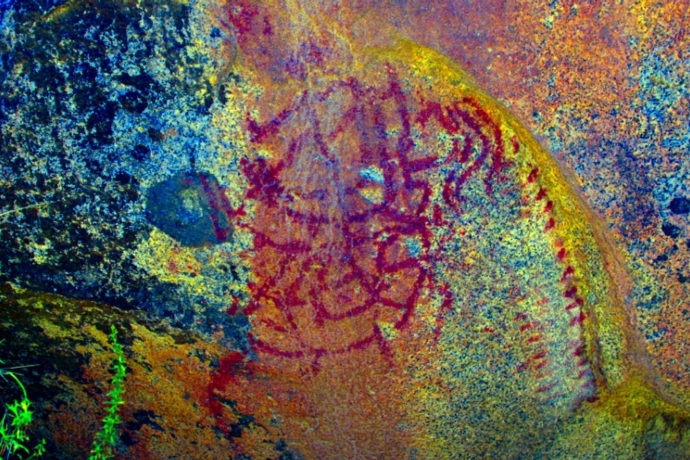“We were lucky that the black paintings were made with coal. If you look at the archaeological literature globally, there are very few absolute dates for rock art.” – Andres Troncoso, archaeologist at the University of Chile.

PHOTO: scientificamerican.com
LIMARI VALLEY, CHILE – Over the course of five years, archaeologists have been cataloging over 150 unique paintings found in north-central Chili’s Limari Valley. The paintings have aged poorly. Most have completely dissolved and are impossible to see with the naked eye. However, thanks to modern digital technology, their stories are finally being told.
The paintings were made by hunter-gatherers living in the Limari Valley and surrounding mountains between 2000 BC and 500 AD. The valley is part of the Coquimbo Region, an area just south of the Atacama desert and 400 kilometers north of the capital, Santiago.
The rock art was discovered using DStretch software – a digital imaging software that detects colors and patterns that the human eye can’t see. It has mathematical algorithms that are pre-programmed specifically for rock art.
The paintings aren’t what you might expect from typical hunter-gatherer rock art. There’s no mammoths, no strange beasts or stick figure men with bows and arrows dancing across cave and cliff walls, no powerful gods watching from the rocks above. The paintings are made up of lines, circles, and squares of all sorts of colors.
Experts believe the artists got their pigments from what was naturally available to them. They used hematite for red, copper for green, geothite for yellow, and coal to make black. They mixed the minerals with animal fat, and used brushes or fingers to create their art.
“We were lucky that the black paintings were made with coal. If you look at the archaeological literature globally, there are very few absolute dates for rock art,” Andres Troncoso commented. Using the coal from the black paintings, the archaeologists were able to use carbon dating to figure out when the paintings were probably created.
But what was the purpose of these vibrant sets of shapes and lines? Were the artists simply playing around, were they giving voices to their inner self-expression? Or was there something a little deeper at work in the Limari Valley? The answer might come from contrasting the two art styles of the different people groups that created these paintings.
Finding Their Place In The World…Through Art
Experts working on the Limari Valley rock art discovered that the paintings belonged to two different contemporary people groups that lived in the Limari Valley – a group from the coastal area, and a group from the mountains. Each had their own style of art.
While there are similarities (both have no depictions of animal or human figures), the archaeologists analyzing the paintings realized that two distinct patterns of composition and use of color existed among the 150 paintings. The paintings from the coast make use of parallel lines, whereas the paintings from the mountains do not.
Why?
“Ultimately,” Troncoso explains, “It comes down to marking which is my territory and which is not my territory. It’s like saying, ‘Those of us who occupy this territory are in the same group and we paint this way.'”
The historians consulting on the site believe that population growth was the reason that the people living in the Limari area felt the need to delineate boundary lines. The more people there were, the more necessary it became to decide who lived where, affecting how social units and the division of natural resources. Yet, questions remain for the archaeologists. No one can agree on whether or not there were other factors at play for how this rock art tradition got started.
The researchers want to expand their study into the neighboring regions in Chile to see how far the paintings extend. It could give them valuable insight into the prehistory of the hunter-gatherer peoples that used to live there. For now, the discovery remains a valuable insight into the early history of the Chilean people.

